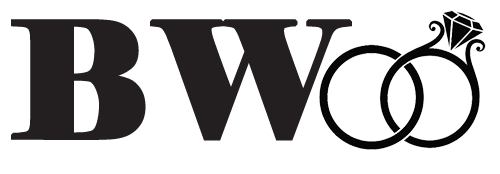A Guide to Custom-Made Wedding Gowns
The wedding gown… one of the most important elements of your big day. It reflects so much about your personality and your sense of style.
But after months of fruitless searching for that perfect gown, you’re just about ready to scream in frustration. Well, don’t give up hope. Maybe there’s a reasonable explanation of why you haven’t found that dress. Maybe it just hasn’t been made yet.
Many brides are now enlisting the services of designers to create gowns that precisely fit not only their individual body shapes but their personalities as well. It’s an alternative that seems to be making many brides happy. And it’s not as difficult or as expensive as you might imagine.
Custom-Made Wedding Gowns | We enlisted the advice of Janine Gustav. Antoinette, on the topic of having a dress custom made for you versus buying a ready-made gown in a bridal salon. Here is what she had to say…
Q1: What is the difference between buying a dress in a salon vs. going to a designer?
A: The kind of attention you receive going to a designer is more focused on you. The designer is there to create the ideas of your dream dress.
Q2: Is having a custom-made wedding dress for you more expensive than buying a ready-made dress?
A: The answer can be yes or no. My wedding dresses start at $1,500 depending on the amount of work and detail you want. Another benefit of going to a designer is that they can create something within your budget.
Q3: How does the process of creating a wedding gown begin and end?
A: Any ideas or pictures the bride wishes to share with me is always a help. Then, I begin to sketch some of the ideas. It takes about three fittings to create the dress and approximately one to three months to complete. When I create a dress, I think of the person who’s going to wear it. Each woman is an individual and her dress should be as such.
Q4: What is the most and least expensive kind of materials used in wedding gowns?
A: Silk Shantung is the most expensive and Satin is the least expensive.
Q5: Do you think a bride should take the advice of the designer who is making the dress?
A: Yes, the bride must remember this is her [the designer’s] business, dealing with lots of different brides who come in different shapes and sizes. So we, the designers, have the benefit and knowledge of what may look best on you.
Q6: What do you think sets your own wedding dresses apart from the rest?
A: Each designer has their own unique touch. Mine would be in creating lace gowns, I make them with no seams, making for a clean finish.
Q7: Any last points to remember when looking for a gown?
A: Make sure before you start, you know your budget, date, and time of the wedding.
To help you in your consultations with a designer, or in your search for a bridal gown, we offer a list of the different types of shape lines for wedding dresses and their descriptions:
A-Line:
Has a fitted look at the top and a subtle falling skirt flaring out.
Ball Gown:
A very tailored waistline with a flowing, very full skirt.
Empire:
A slim skirt with a high fitted waist beginning below the bustline.
Sheath:
One of the more modern styles, straight skirt, fitted to take the shape of the body.
Mermaid:
A very slim dress ending with a fish-like flare.
